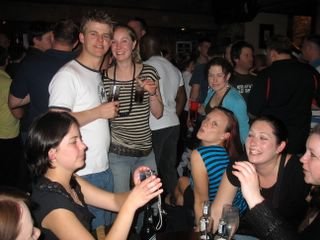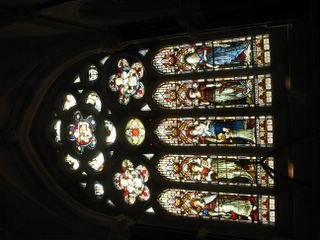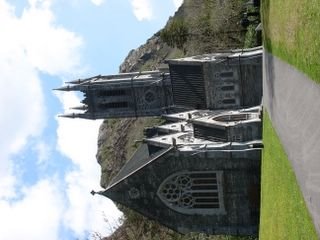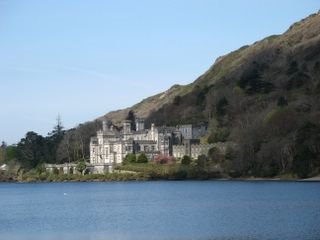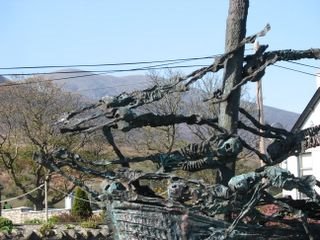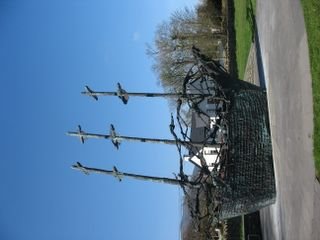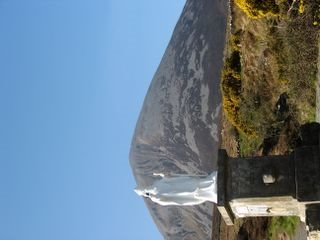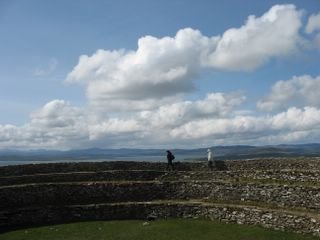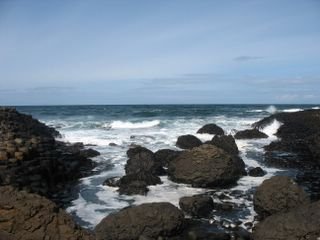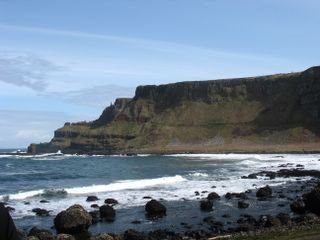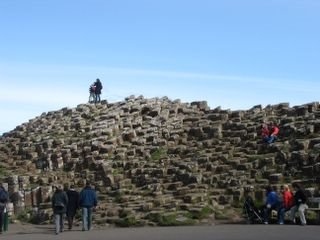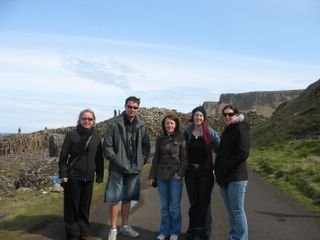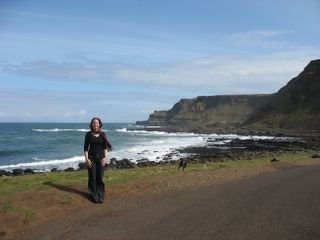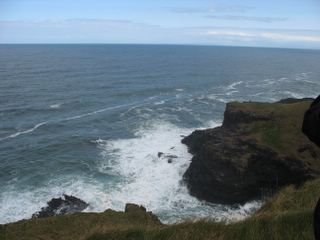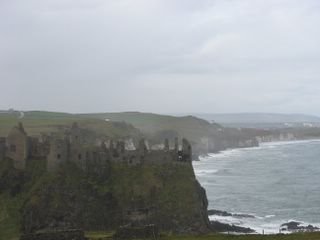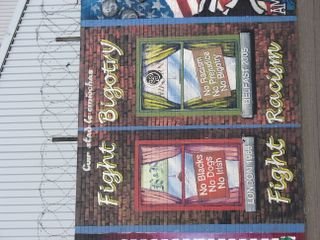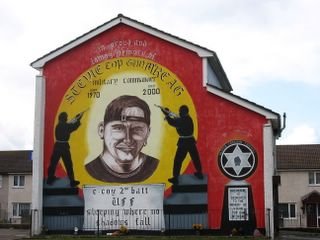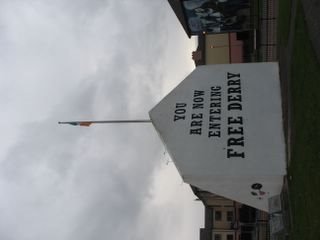St. Patrick, Apostle of Ireland
St. Patrick is one of the world's most popular saints. It is unclear exactly where Patricius Magonus Sucatus was born, but it is almost certain that this great Irish saint was not born in Ireland. As a child Patrick showed no particular interest in religion, and as a youth he practically renounced the faith of his family. His parents, Calpurnius and Conchessa, were Romans living in Britain. The French like to claim that Patrick was born in Gaul, but most other accounts agree he was born in Kilpatrick near Dumbarton, Scotland in the year 387.
Sometime in his mid-teens Patrick was kidnapped in a raid, taken to Ireland as a slave, and put to work as a shepherd. In the despair of his captivity he turned to God in intense and desperate prayer, drawing comfort from the Christian faith that he and so many others of his people had abandoned under Roman rule. Therefore, through divine providence, the years of Patrick's captivity became a preparation for his future in ministry. He learned the language and customs of the Irish people who held him, and even while he practiced devotion to Christ he also became very familiar with the pagan and druidic practices that were popular throughout Ireland at that time. After six years as a slave he was told by an angel in a dream to run away to the coast. He travelled over 200 miles from Ballymena to Wexford and escaped on a ship that was taking dogs to Gaul (France). After landing in England he was recaptured and returned to slavery, but this time he escaped again after only two months and traveled around Europe seeking his destiny.
Patrick spent 15 years as a disciple of St. Germanus of Auxerre, and was ordained about the year 417. There is still a strong cultus of Patrick in France, especially around St. Patrice, a town named for him. St. Patrice is only a few miles west of Tours, and the local people firmly believe that Patrick was the nephew of St. Martin of Tours and served as a monk in his uncle’s great Marmoûtiers Abbey. At Marmoûtiers today there is a stone bed alleged to have been slept on by Patrick. St. Germanus consecrated Patrick bishop about the year 432, and Pope St. Celestine I sent Patrick to succeed St. Palladius, who had been the first bishop of Ireland.
Patrick landed at Slane in 433 and soon entered into conflict with regional chieftains by lighting his Easter Vigil fire in a manner contrary to the wishes of the King. The local druidic priests, who were apprehensive about the meaning of Patrick’s arrival, prophesied that “this fire, which has been lighted in defiance of the royal edict, will blaze for ever in this land unless it be this very night extinguished.” The fire continued to burn miraculously in spite of all physical and spiritual efforts to put it out, and as a result Patrick was granted permission to preach the Faith throughout the length and breadth of Eireann. In essence, the druidical prophecy was true and is still being fulfilled: the sacred fire kindled by St. Patrick in Ireland has never been extinguished.
The form of early Irish Christianity planted by Patrick is much more joyful and celebratory than its Roman predecessor in its approach to the natural world. It is not a theology of sin but rather a theology emphasizing the goodness of creation. It is intensely fleshly and incarnational. The conversion of Ireland is the first example of the Christian faith thriving in a culture that celebrates rather than abnegates the natural, a culture in which there is a sense of the entire world as holy. In Celtic theology, the whole created order is Book of God—filled with healing mystery, and fraught with divine messages.
Patrick set up his see at Armagh in approximately 435. Many wonderful stories are told about this period in his life, including the legend that he drove the snakes from Ireland, that he described the Trinity by referring to the shamrock, that his preaching was supported with frequent glorious miracles, and he was single-handedly responsible for the conversion of the entire country. But the Patrick of historical record is just as compelling as the Patrick of legend. Two brief documents, Patrick's Confession and his "Letter to Coroticus," generally accepted by scholars as authentic, are the basis for what we know of the historical Patrick. He was the first real organizer of the Catholic Church in Ireland by dividing the church into territorial sees; he raised the standard of biblical scholarship and especially encouraged the wider teaching of Latin; he travelled throughout the country preaching, teaching, building churches, and opening schools and monasteries; and he converted countless people of all social classes, and inspired many to become monks and nuns. He not only shared God with the people of Ireland, but also grew in his understanding of God through them.
The manifold virtues by which the early Celtic saints were distinguished shone forth brightly in the life of St. Patrick. When not engaged in the work of sacred ministry, much of his time was spent in prayer. He wore a rough hair-shirt and made hard rock his bed. Converts of high rank would offer him their precious ornaments, but Patrick was not interested in material wealth. Some followers even revere Patrick as a mystic because the major events in his life are preceded by dreams or visions, he never relaxed his penitential exercises, and his intense prayer life reflected a deep awareness of the precious nearness of God at all times.
In the far west of Connaught there is a range of tall mountains, which, arrayed in rugged majesty, bid defiance to the waves and storms of the Atlantic. At the head of this range arises a solitary peak known as Croagh Patrick, or St. Patrick's mountain, and it is honored as the Holy Hill, the Mount Sinai of Ireland. It is said that St. Patrick, in obedience to his guardian angel, made this mountain his hallowed place of retreat. In imitation of the great Jewish legislator on Sinai, Patrick spent forty days on its summit in fasting and prayer, and other penitential exercises. His only shelter from the fury of the elements was a recess in the solid rock, and the flagstone on which he rested his weary limbs at night is still pointed out. The whole purpose of his prayer was to obtain special blessings and mercy for the Irish. It is believed that his prayers were answered: through his unconquerable love of heavenly things, his unremitting penitential deeds, and his unceasing prayers, Patrick obtained extraordinary favors for the people of Ireland whom he loved and evangelized.
Not surprisingly his own experience in captivity left Patrick with a virulent hatred of the institution of slavery, and he would become the first significant figure in Church history to speak out unequivocally against it. His time in captivity also increased in him the ability to suffer and to understand what other people’s suffering is like. As a result Patrick has been adopted as one of the great patrons of the downtrodden and excluded, or for anyone living on the fringes of society.
Women also find a great advocate in Patrick. As one scholar said: “It is clear that the man who wrote the Confession and Letter to Coroticus is deeply and sensitively open to women and womanhood. He does not take refuge in the pretentious asceticism, nor in that neurotic fear of and contempt for the feminine that has entered so deeply into the attitudes and structures of the Christian Church. In this respect he is a complete man.” Elsewhere in his writings Patrick lauds the strength and courage of Irish women: “It is the women kept in slavery who suffer the most—and who keep their spirits up despite the menacing and terrorizing they must endure. The Lord gives grace to his many handmaids; and though they are forbidden to do so, they follow him with backbone.” Unlike his contemporary, St. Augustine, to whom actual women seemed more like personifications of the temptations of the flesh than human persons, Patrick's Confession speaks of women as individuals. Some feel he was the first significant male Christian after Jesus to consistently speak well of women.
For 40 years St. Patrick continued to visit and watch over the churches which he had founded in all the provinces in Ireland. He comforted the faithful in their difficulties, strengthened them in the practice of virtue, and appointed pastors to continue his work among them. It is recorded that he consecrated no fewer than 350 bishops. Near the end of his life, St. Brigid came to him, bringing the shroud in which he would be enshrined. When St. Patrick and St. Brigid were united in their last prayer, he saw the whole of Ireland lit up with the brightest rays of Divine Faith. St. Patrick prayed that the light would never be extinguished, and an angel came to him and announced: “Fear not: your apostolate shall never cease. Such shall be the abiding splendor of Divine Truth in Ireland.” Patrick died at Saul on Strangford Lough, in Downpatrick, where he had built his first church. His remains were wrapped in a shroud woven by St. Brigid's own hands.
And so it was that a young Briton named Patricius died an Irishman named Patrick, and neither Ireland nor Christianity was ever quite the same. By the time of his death, or shortly thereafter, the Irish stopped slave trading and never took it up again. Human sacrifice had become unthinkable. His countrymen never stopped making war on one another, but war became much more confined and limited by what we now call the rules of warfare. In the modern classic How the Irish Saved Civilization, it is said that Patrick's conversion of Ireland made possible the preservation of Western thought through the early Dark Ages by means of the monasteries founded by Patrick's successors. When the lights went out all over Europe, a candle still burned in Ireland. That candle was lit by Patrick. And since it was Irish monks who served as the bridge between classical Christianity and the Middle Ages, medieval Christianity as a whole tends to reflect the celebratory nature of Irish spirituality rather than the gloom and sin-centeredness of its classical predecessor.
In art, Saint Patrick is represented as a bishop driving snakes before him or trampling upon them. Sometimes he is shown holding a shamrock, or standing before the Paschal Fire. Almost everyone knows that Patrick is the patron saint of Ireland, but not as many are aware that he is also the patron saint of Nigeria, a country that was evangelized primarily by Irish clergy. Like St. Nicholas and St. Valentine, Patrick is one of the few saints who is widely loved and admired in the secular world as well as within the Church. His name occurs widely in prayers and blessings, including the common salutation, "May God, Mary, and Patrick bless you." St. Patrick died on March 17, 461.
http://allsaintsbrookline.org/celtic/saints/patrick.html
